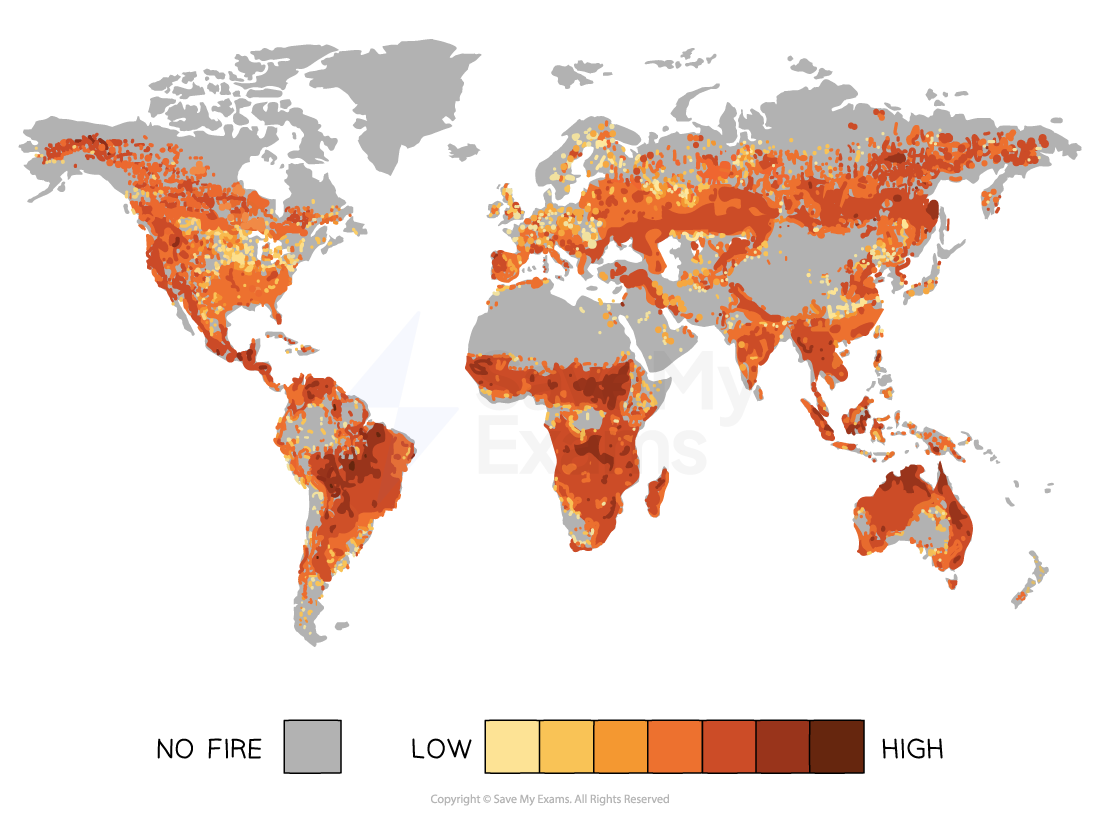Distributions of Wildfires
- Wildfires are uncontrolled fires that occur in natural areas such as forests and grasslands
- There are three types of wildfire:
- Ground fires burn beneath the ground surface with tree roots and peat layers burning
- They are smouldering, slow-moving fires that can burn for days and weeks with no visible flame and little smoke
- Surface fires burn through low-lying vegetation such as grass, bushes and small trees
- They are the most common and can move quickly
- Crown fires burn through the canopy layer which is the top layer of vegetation
- They are usually the most dangerous and destructive type of wildfire because they move quickly and often produce intense heat and flames

Types of wildfire
Exam Tip
Remember, all three types of fire can be present at once, making it more challenging to predict and manage.
- Wildfires occur all over the world (except for Antarctica)
- Wildfires are most common in the tropics and subtropics
- Countries that experience the highest number of wildfires include Brazil, Indonesia and Australia
- They are also common in large, forested areas of dense vegetation
- e.g. Russia, Canada and USA all experience frequent wildfires

Global distribution of wildfires


